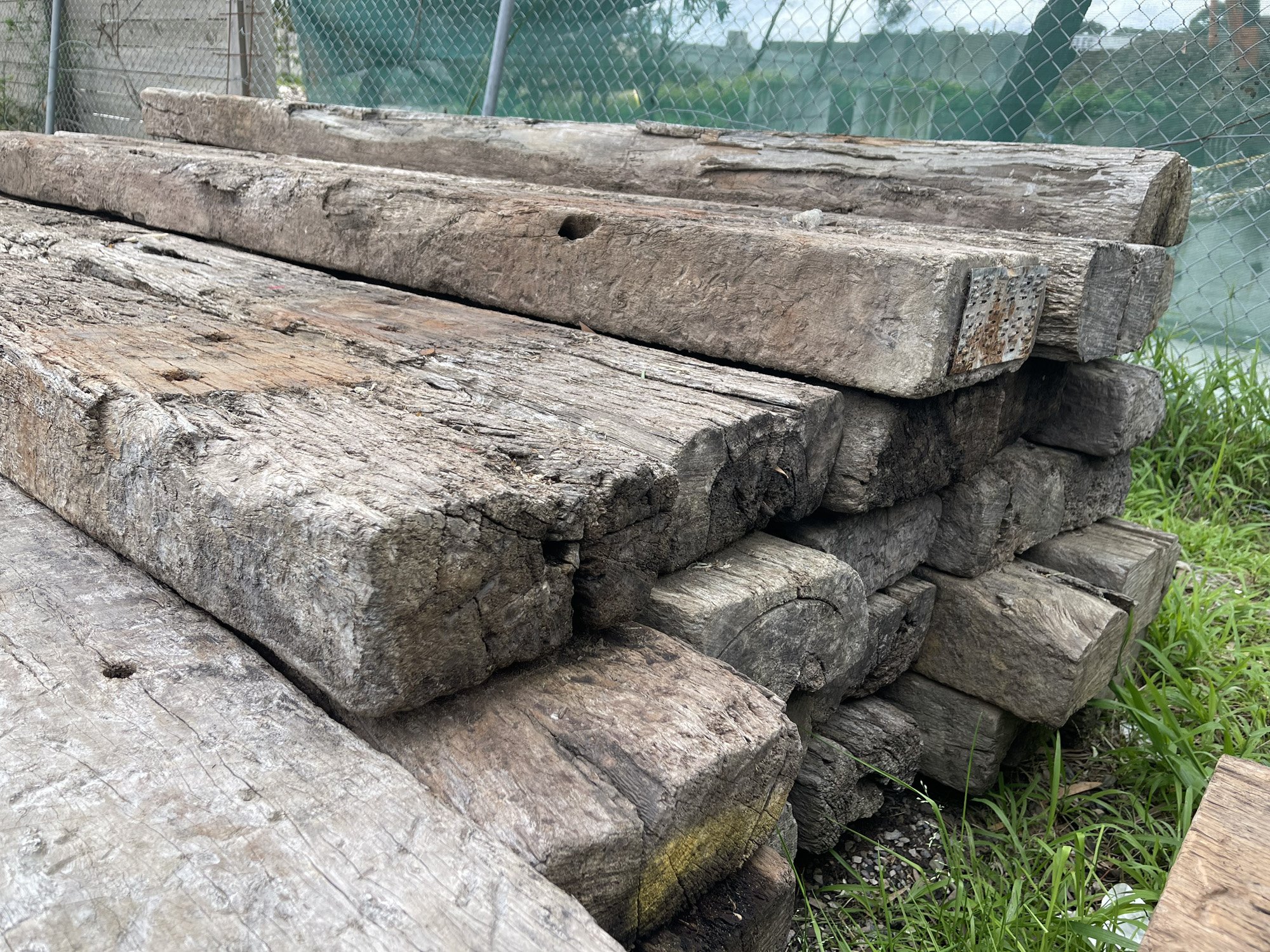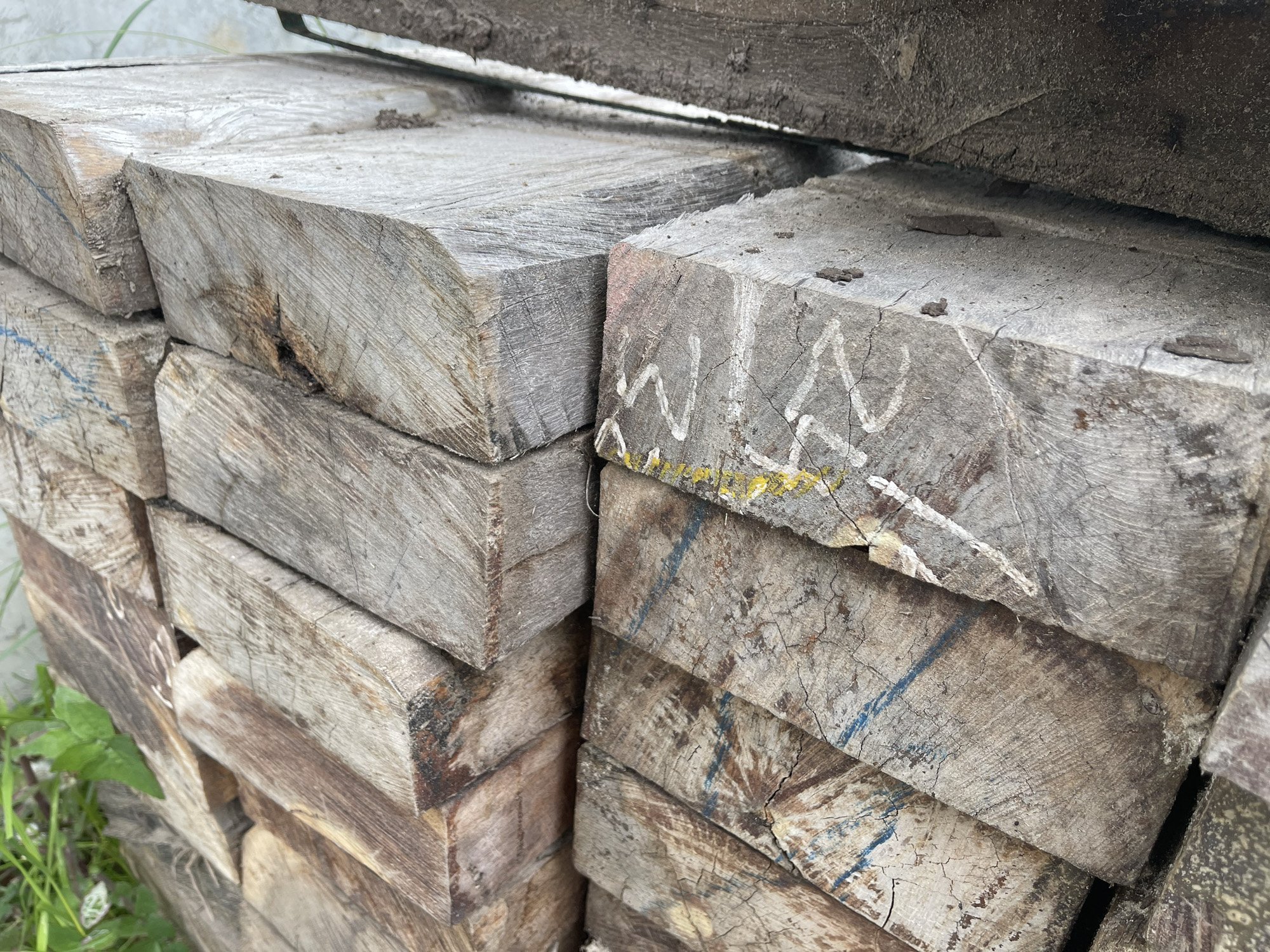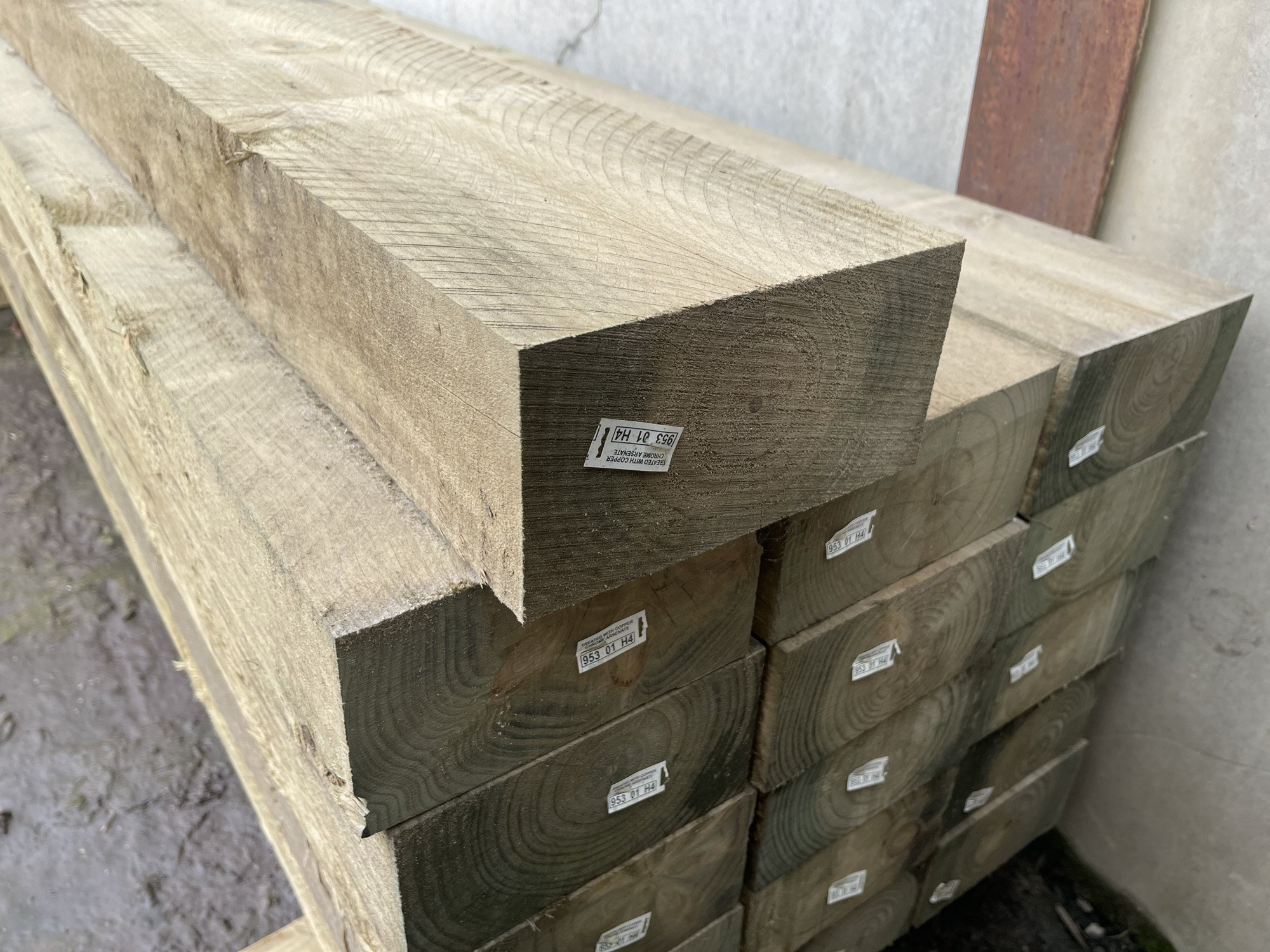Timber Products
Quality timber products for versatile outdoor projects.
WPC Sleepers
-
Size: 2200 × 200 × 77mm ea
WPC Sleepers (Wood Plastic Composite Sleepers) are an innovative alternative to traditional timber and concrete sleepers, offering the perfect blend of natural aesthetics and long-lasting performance. Made from a combination of recycled wood fibres and plastic, WPC Sleepers are engineered to deliver strength, durability, and resistance to the elements—without the warping, splitting, or rotting associated with timber.
Ideal for retaining walls, garden edging, raised beds, and landscaping features, WPC Sleepers provide a low-maintenance, eco-friendly solution that maintains its look and structure for years. With a clean, modern finish and a variety of colours available, they offer both practicality and style for any outdoor space.
-
One of the standout features of WPC Sleepers is their exceptional resistance to moisture, termites, and decay. Unlike natural timber, WPC does not absorb water, meaning it won’t swell, split, or rot over time. This makes it especially suited to Australian conditions where weather extremes and pest exposure are common. Its UV-resistant surface also ensures the colour remains stable and doesn’t fade quickly under the harsh sun.
WPC Sleepers are also low-maintenance and easy to install, making them a favourite for both DIYers and landscapers. They’re lightweight yet structurally strong, requiring no painting, sealing, or staining. As an added benefit, they’re made from recycled materials, making them a sustainable and environmentally responsible choice. With WPC Sleepers, you get the warm, natural look of timber with the hardwearing performance of composite technology—perfect for creating long-lasting, stylish outdoor spaces.
Railway Sleepers
-
Railway Sleepers are robust, heavy-duty timber beams widely used in landscaping, construction, and garden design. Originally designed for railway tracks, these sleepers have become a popular choice for retaining walls, garden edging, raised garden beds, and outdoor furniture due to their strength and rustic appeal. Available in hardwood, treated pine, and recycled options, railway sleepers offer a timeless, natural look that enhances outdoor spaces while providing structural integrity.
Perfect for both residential and commercial applications, Railway Sleepers are incredibly versatile, capable of creating durable, long-lasting features in gardens, pathways, and outdoor seating areas. Their solid construction ensures they can withstand heavy loads and extreme weather conditions, making them a practical and aesthetic choice for a range of landscaping projects.
-
One of the standout benefits of Railway Sleepers is their exceptional durability and strength. Whether made from hardwood or treated pine, these sleepers are designed to resist moisture, pests, and rot, ensuring long-term performance in outdoor settings. Their solid, weighty nature makes them ideal for retaining walls, raised garden beds, and steps, providing stability and structure in landscaping designs.
Beyond their functionality, Railway Sleepers offer versatile design possibilities. Their natural timber appearance adds warmth and character to outdoor spaces, blending seamlessly with various landscape styles. They can be used in their raw, rugged form for a rustic aesthetic or cut and finished for a more refined look. Easy to install and highly adaptable, Railway Sleepers are a go-to choice for homeowners, gardeners, and landscapers looking to add both strength and charm to their outdoor projects.
Treated Pine Sleepers
-
"Treated Pine Sleepers" are a versatile and durable choice for various landscaping and construction projects. These specially treated pine wood beams offer a range of benefits that make them a popular material for outdoor and structural applications.
-
1. Durability: Treated Pine Sleepers are treated with preservatives to protect against decay, insects, and rot, ensuring their longevity, even in harsh outdoor environments.
2. Versatility: These sleepers are incredibly versatile and can be used for a wide range of applications. From garden edging and retaining walls to raised garden beds and outdoor furniture, Treated Pine Sleepers can be adapted to suit your project.
3. Easy to Work With: Treated Pine Sleepers are easy to cut, shape, and install, making them a preferred choice for DIY enthusiasts and professionals alike. Their workability allows for creativity in design.
4. Aesthetic Appeal: The natural appearance of treated pine complements various outdoor settings. You can choose to leave them as is for a rustic look or apply stains and finishes for a more polished appearance.
5. Sustainability: Many Treated Pine Sleepers are sourced from sustainable forests, making them an eco-friendly choice for environmentally conscious projects.
6. Load-Bearing Capability: Treated Pine Sleepers are sturdy and can bear substantial loads, making them suitable for retaining walls, garden borders, and other structural elements.
7. Cost-Effective: Compared to some other landscaping materials, Treated Pine Sleepers offer an affordable option without compromising on quality and performance.
8. Low Maintenance: Once in place, Treated Pine Sleepers require minimal maintenance. Occasional staining or sealing can help preserve their appearance and extend their lifespan.
9. Resistance to Termites: The preservative treatment process renders Treated Pine Sleepers resistant to termite infestations, providing peace of mind for long-term use.
10. Customisation: You can cut, shape, and stack Treated Pine Sleepers to create various design elements, including steps, terraces, and raised garden beds, giving your outdoor space a unique and personalised touch.
Whether you're embarking on a landscaping project, building garden structures, or constructing retaining walls, Treated Pine Sleepers offer a practical, cost-effective, and aesthetically pleasing solution. Their durability, versatility, and ease of use make them a top choice for enhancing your outdoor space and adding value to your property.
Coloured Treated Pine Sleepers
-
"Coloured Treated Pine Sleepers" offer all the benefits of traditional treated pine sleepers with an added aesthetic dimension. These specially treated pine sleepers are infused with vibrant and long-lasting colours, providing an attractive and distinctive look to your landscaping and construction projects.
-
1. Durability and Aesthetics: Coloured Treated Pine Sleepers combine the durability of treated pine with the visual appeal of various colours. The infused pigments add a touch of vibrancy and character to your outdoor spaces, allowing you to match or contrast with your landscaping theme.
2. Versatility: Like traditional treated pine sleepers, Coloured Treated Pine Sleepers are incredibly versatile. They can be used for garden edging, retaining walls, raised garden beds, steps, and a wide range of other landscaping and construction applications.
3. Low Maintenance: These sleepers require minimal maintenance. The colour treatment helps preserve their appearance, and occasional cleaning or sealing can help extend their vibrant look even further.
4. Resistance to Decay and Insects: Just like untreated pine sleepers, Coloured Treated Pine Sleepers are treated with preservatives to protect against decay, insects, and rot, ensuring their longevity in outdoor environments.
5. Sustainability: Many Coloured Treated Pine Sleepers are sourced from sustainable forests, making them an eco-friendly choice for environmentally conscious projects.
6. Easy to Work With: These sleepers are easy to cut and install, offering flexibility in your design and construction process. DIY enthusiasts and professionals alike appreciate their user-friendly characteristics.
7. Customisable Aesthetics: With a variety of colours available, you can choose the shade that best complements your outdoor space's style and ambiance. Whether you prefer earthy tones, bold colours, or a natural wood appearance, there's an option to suit your preferences.
8. Load-Bearing Capability: Coloured Treated Pine Sleepers are sturdy and can support substantial loads, making them suitable for various structural elements in your landscaping projects.
9. Termite Resistance: The preservative treatment process makes these sleepers resistant to termite infestations, ensuring long-term durability.
Whether you're looking to add a splash of colour to your garden, create eye-catching retaining walls, or construct attractive garden borders, Coloured Treated Pine Sleepers provide an excellent combination of visual appeal and functionality. Their ability to withstand the elements while offering customisation options makes them a compelling choice for enhancing your outdoor spaces.



















